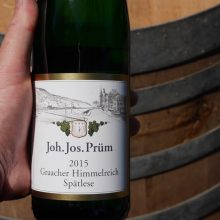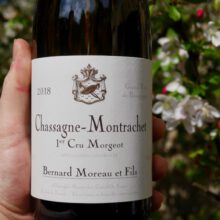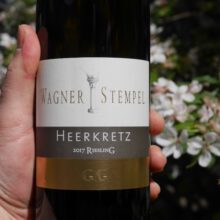
Product information
Joh Jos Prum Graacher Himmelreich Riesling Spätlese 2015
$74
Description
In 1993 I was hoovering bottles of Prüm, Spatlese and Auslese from 1983. On sharing my first bottle with friends, I was instantly in love. These are such succulent, fresh, vibrant, wines. With age adding an extra dimension of beauty and poise.
The 2015 Graacher Himmelreich Spätlese took me back to those wines. As it opened in the glass it simply put, delivered happiness!
Out of stock







You must be logged in to post a comment.